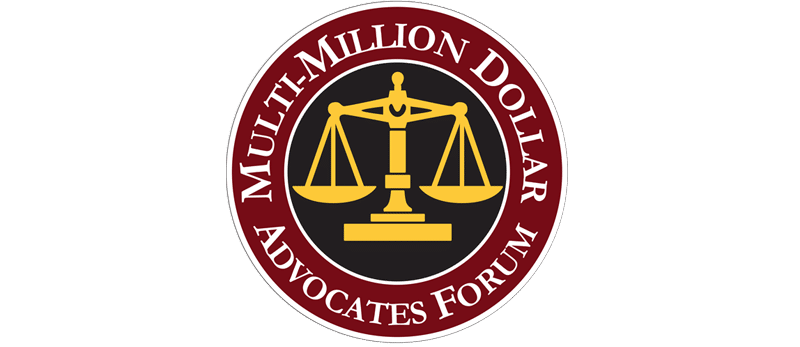Pedestrian accidents can have serious and lasting impacts on the lives of those involved. When a person is injured in such an accident in North Carolina, they may be entitled to seek compensation for their injuries. However, the law imposes a time limit on how long an injured pedestrian can file a claim. This time limit is called the statute of limitations, and it plays a critical role in determining whether an injured party can pursue legal action. Understanding the statute of limitations for North Carolina pedestrian accident claims is essential for anyone looking to protect their legal rights after an accident. At, Phillips & McCrea, PLLC , we are here to guide you through the legal process and help you navigate the complexities of your case.




What is the Statute of Limitations?
The statute of limitations is a legal rule that sets the maximum amount of time a person has to file a lawsuit after an injury or accident occurs. This rule exists to ensure that cases are filed within a reasonable time, allowing for evidence to remain fresh and for both parties involved to resolve the dispute in a timely manner. In North Carolina, the statute of limitations for pedestrian accident claims typically falls under the general rules for personal injury claims. However, there are specific details that anyone involved in such a claim should be aware of to avoid missing this important deadline.
Time Limits for Pedestrian Accident Claims in North Carolina
In North Carolina, the statute of limitations for personal injury claims, including pedestrian accidents, is three years from the date of the accident. This means that if a pedestrian is injured in an accident, they must file their claim within three years of the date when the accident occurred. If the claim is not filed within this period, the injured party may lose their right to seek compensation for their injuries.
It is important to understand that this time frame applies to civil cases involving pedestrian accidents, where the injured party is seeking compensation for damages such as medical bills, lost wages, and pain and suffering. If the claim is not filed within this time frame, the court may dismiss the case, and the injured person may have no further legal options available.
Why the Statute of Limitations is Important
The statute of limitations serves several purposes in the legal system. One of the key reasons for this rule is that it helps ensure that legal disputes are resolved in a timely manner. Over time, evidence can be lost, and witness memories can fade, making it more difficult to accurately determine what happened during the accident. By requiring that claims be filed within a specific time frame, the statute of limitations helps preserve the integrity of the evidence and ensures that both parties involved in the case can present their side fairly.
For the injured pedestrian, understanding and following the statute of limitations is essential to protecting their right to compensation. Missing the deadline can mean losing the chance to receive financial help for medical expenses, rehabilitation, lost wages, and other damages that may result from the accident. This is why it is crucial for anyone injured in a pedestrian accident to seek legal assistance as soon as possible to ensure that they meet the filing requirements.
Exceptions to the Statute of Limitations in North Carolina
While the general rule for pedestrian accident claims in North Carolina is three years, there are some situations where exceptions to this time frame may apply. One of the most common exceptions is when the injured person is a minor at the time of the accident. In cases where the injured pedestrian is under the age of 18, the statute of limitations does not begin until the minor turns 18. This means that the clock on the three-year time limit starts running on their 18th birthday, giving them until their 21st birthday to file a claim.
Another exception involves cases where the injury is not immediately discovered. In some instances, injuries sustained in a pedestrian accident may not become apparent until weeks or even months after the accident. When this happens, the statute of limitations may be extended to start from the date when the injury is discovered, rather than the date of the accident. However, this exception is relatively rare, and it can be difficult to prove that an injury was not discovered earlier, so it is always best to act quickly and seek legal advice soon after the accident.
The Impact of Wrongful Death Claims on the Statute of Limitations
In tragic cases where a pedestrian accident results in the death of the pedestrian, the statute of limitations for filing a wrongful death claim is different from the general personal injury rule. In North Carolina, the statute of limitations for wrongful death claims is two years from the date of the pedestrian’s death. This means that if a pedestrian is fatally injured in an accident, the surviving family members or representatives of the deceased’s estate have two years from the date of death to file a claim seeking compensation for their loss.
It is important to note that the statute of limitations for wrongful death claims starts from the date of the pedestrian’s death, not the date of the accident itself. This distinction can be important, especially if there is a delay between the time of the accident and the death of the pedestrian. Families who have lost a loved one in a pedestrian accident should act quickly to consult with legal professionals to ensure they meet this important deadline.
Seeking Legal Help to Meet the Statute of Limitations
Filing a pedestrian accident claim within the statute of limitations is crucial, but it can also be a complex and challenging process. Injured pedestrians often face a range of difficulties in the aftermath of an accident, from dealing with medical treatments to handling insurance claims. Additionally, gathering evidence, interviewing witnesses, and negotiating with insurance companies can take time and effort, which may make it easy to lose track of important deadlines.
For these reasons, it is often in the best interest of injured pedestrians and their families to seek legal representation early in the process. Working with an attorney who is knowledgeable in North Carolina personal injury law can help ensure that all the necessary steps are taken to file a claim within the statute of limitations. A legal professional can also help assess the full extent of the damages, negotiate with insurance companies, and build a strong case on behalf of the injured party.
Choosing a Personal Injury Attorney Personal Injury Case Case TimelineRelated Videos
What Happens if You Miss the Statute of Limitations?
Failing to file a pedestrian accident claim within the statute of limitations can have serious consequences. In most cases, if the claim is not filed on time, the injured party will lose the right to seek compensation through the courts. This means that even if the other party was clearly at fault for the accident, the court may refuse to hear the case, leaving the injured person without any legal recourse.
There are some very limited circumstances where a court may allow a case to proceed even after the statute of limitations has passed, but these situations are extremely rare and typically require extraordinary reasons for the delay. For most pedestrian accident claims, it is essential to file within the three-year time limit to preserve the right to seek compensation for injuries.
How a Lawyer Can Help You Understand the Statute of Limitations
Understanding the statute of limitations for pedestrian accident claims in North Carolina can be confusing, especially for those who are not familiar with the legal system. Fortunately, injured pedestrians do not have to navigate this process alone. An experienced attorney can help injured individuals understand the specific time limits that apply to their case, as well as any exceptions that might affect the deadline.
Additionally, an attorney can help ensure that all necessary paperwork is filed correctly and on time, reducing the risk of missing important deadlines. By working with a lawyer who is familiar with the laws in North Carolina, injured pedestrians can focus on their recovery while knowing that their legal rights are being protected.
If you or a loved one has been injured in a pedestrian accident in North Carolina, it is important to act quickly to protect your legal rights. The statute of limitations sets a strict time limit on how long you have to file a claim, and missing this deadline could mean losing the chance to seek compensation for your injuries.
At Phillips & McCrea, PLLC, our team is dedicated to helping injured pedestrians navigate the complex legal process and secure the compensation they deserve. We understand how overwhelming it can be to deal with the aftermath of an accident, and we are here to provide the guidance and support you need during this challenging time. Contact us today to schedule a consultation and learn how we can help you with your pedestrian accident claim.




